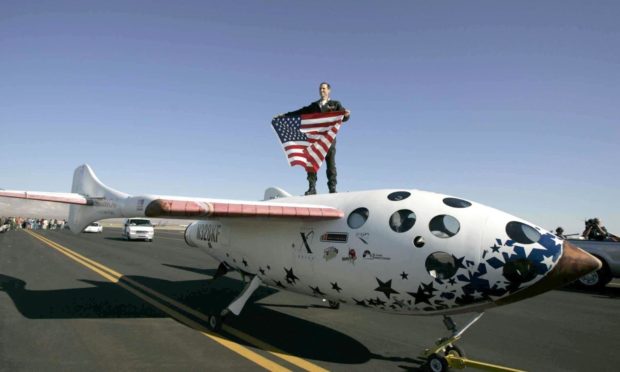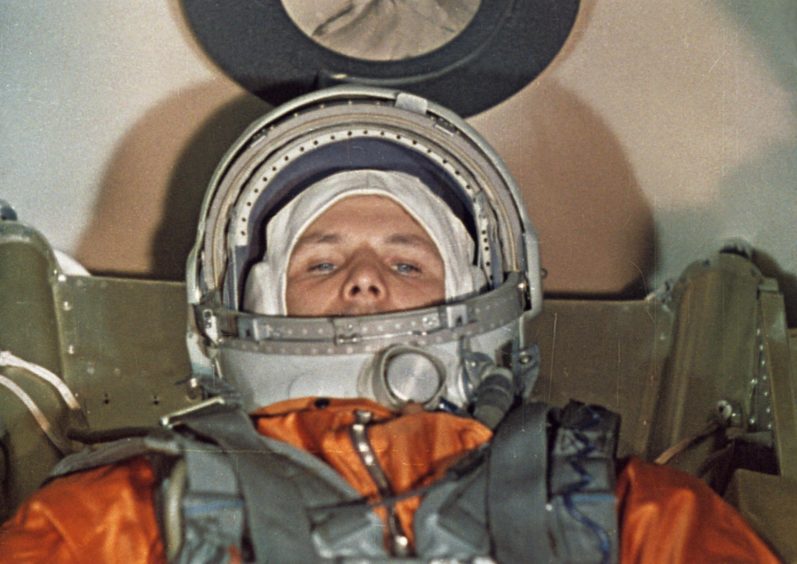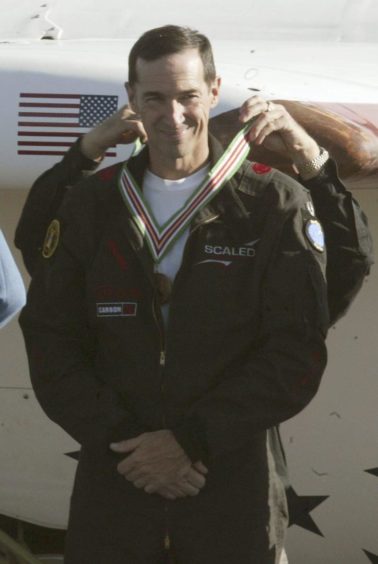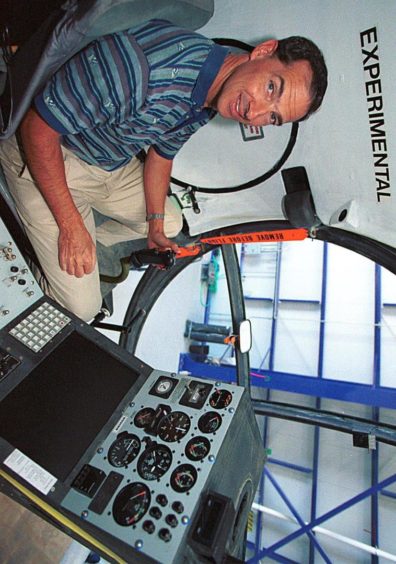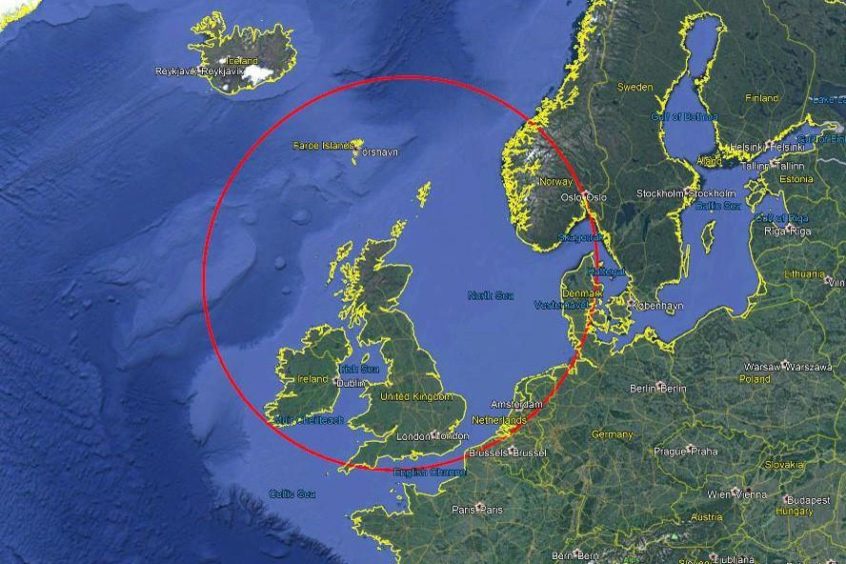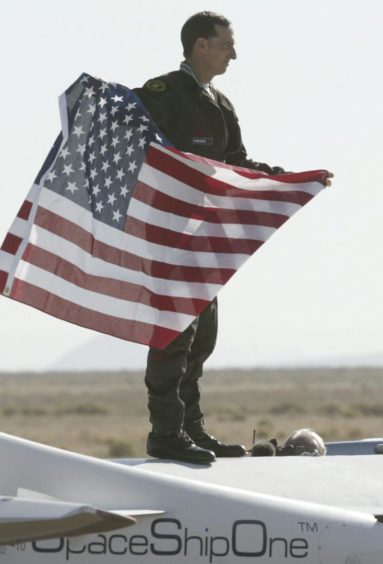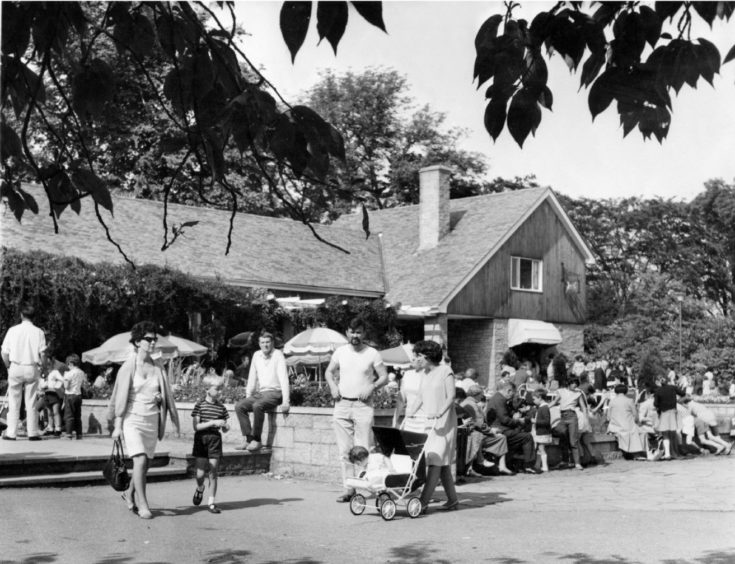Brian Binnie has never forgotten the conversation he had with his mother when he was just seven years of age.
At that stage, while he was growing up in Milltimber in Aberdeen, the youngster was increasingly excited by the development of rockets and modules which were being despatched into space as the United States and the Soviet Union vied for propaganda victories and extra-terrestrial triumphs.
Science was in his DNA – his father, William, was a physicist at Aberdeen University and Brian returned to the institution to receive an honorary degree in 2006 – and he grew up in the late 1950s and 1960s during the period when Sputnik was launched in 1957, Yuri Gagarin became the first human being to go into space in 1961 and the Apollo programme was the catalyst for Neil Armstrong and Buzz Aldrin walking on the Moon in 1969.
It was an exhilarating time for the bright-eyed Mr Binnie who was captivated by planes, jets and aircraft – and eventually made history by becoming the first Scot to travel into space in 2004 – but his epic journey to the stars began when the idea was planted in his head by his mum.
He recalled: “While I had a fascination with things that fly, she was the one, when I was about seven, who asked me what I wanted to be when I grew up.
“I struggled to find an answer and so she interrupted me with the words: ‘If I was a wee laddie, I would want to be an astronaut.’
“And since I didn’t know what she meant, she went on to tell me about rockets and space, about planets and stars. And I was hooked from that moment on.”
The white heat of technology shone in the 60s
Mr Binnie still speaks about those momentous exploits in the 1960s with the breathless enthusiasm of somebody in thrall to space exploration.
He may be in his late 60s, but there’s still a boyish wonder in his memories of how technological advances allowed his generation to think the unthinkable.
He told me: “Yuri’s flight was certainly an attention-getter, but Sputnik had a greater impact. The US was already spooled up and, with a few different management decisions, it could easily have been Alan Shepard up there first [the American made his trek into space three weeks after Gagarin].
“I don’t really know how the USSR picked their astronauts [or cosmonauts in the Russian parlance], but there is no doubt that they had to be fine physical specimens with an unexcitable temperament.
“The Russians were also notorious for maintaining command and control of things on the ground and taking away from their astronauts – and military pilots – many options for override control as the US astronauts demanded.
“It was a time when many things happened very quickly. There was, of course, the success of Gagarin, then shortly thereafter, they launched the first female [Valentina Tereshkova] into space in 1963.
“And that rattled NASA as much as anything.”
A mission which still oozes drama for Binnie
Mr Binnie is still involved in analysing the viability of commercial space travel, though he recognises the difficulties involved in such an enterprise.
But he has marvelled at how the early spacemen and women transcended innumerable obstacles, even if there were tragedies along the way.
He added: “The race to put men on the moon was incredibly ambitious. President John F Kennedy announced the challenge to put a man on the moon and bring him back before the end of the decade in 1961.
“The programme went through the Mercury flights, the Gemini flights, and was preparing for the first Apollo mission in January 1967 when a fire broke out and killed all three astronauts on the launch pad.
“It was a terrible thing. And yet, the fact that NASA recovered from that tragedy to Neil Armstrong’s ‘one small step’ in 1969 is astounding.
“Huge risks were taken to completely redesign the capsule and Apollo 8 was another milestone flight to demonstrate translunar injection.
“Meanwhile, Armstrong was learning to fly the LEM [lunar excursion module] flight simulator, ejecting once when the craft became unstable.
“The amount of fuel which was available to Armstrong and Aldrin to set the LEM down [on the moon surface] was not generous and the manoeuvring he was required to accomplish to find a suitable touchdown site left only seconds of reserve fuel.
“As [NASA’s] Charlie Duke said after the touchdown – ‘you had a bunch of folk down here turning blue’ – because they were literally holding their breath.
“But it succeeded, it worked, and it changed the course of history.”
The Scot progressed from test pilot to space pioneer
As an experienced and well-regarded aviator, Mr Binnie first arrived in the Mojave Desert in California when he was hired as a test pilot by the Rotary Rocket Company, an organisation which was striving to develop a commercial spaceship which would land using a helicopter-style rotor blade system.
He helped develop the craft to the stage where it could fly but, when the firm shut down, he moved in 2000 to work for Scaled Composites, the leaders of the private space programme and his dreams moved closer to reality.
As he said: “It was the chance of a lifetime and I knew that I wasn’t going to get a second opportunity.” He was in his 50s: the clock was ticking.
But then, on October 4, 2004, he made his historic flight in SpaceShipOne [the project financed by aerospace engineer and entrepreneur Burt Rutan]. The craft went higher than it had ever gone before in previous test flights and, in the process, accentuated the possibility of commercial space flight.
However, despite much talk of Scotland being at the forefront of the creation of a new spaceport facility in the Highlands, he offered a cautious perspective on the problems faced by such an endeavour.
The pluses and minuses of commercial space travel
There have been no short cuts or quick fixes on Mr Binnie’s road to the stars.
He had to gain several aviation and aerospace degrees, subsequently spent more than 20 years as a Navy test pilot and four years involved in the process of developing the world’s first commercial passenger vessel – SpaceShipOne – before becoming Scotland’s first astronaut.
All of which means he has a wealth of knowledge about the pitfalls which stand in the way of anybody aiming to bring space travel to the wider public.
He said: “I believe Northern Scotland would be awesome for sub-orbital tourism as the view [defined by the red circle] would be staggering.
“The downside would be cloud coverage – which, obviously isn’t just a Scottish problem. Nonetheless, it would need to be figured into the operations.
“However, a flexible launch window might help mitigate matters, as long as your version of the FAA [which is the CAA] buys into it.
“As far as it goes in discussing routine operations involving commercial passengers going into space, that’s tricky because, currently, there is no place or destination for them to go.
“I don’t see the International Space Station ever accommodating anybody but a few really wealthy adventurers, so that’s out. Various people have also proposed alternative habitats, but I’ve been hearing these suggestions for almost as long as I have been alive.
“On the other hand, there is no technical reason why the sub-orbital market couldn’t be lucrative in the future. There is plenty of interest for both passengers and payloads – and certainly enough to get the price down to where it’s in reach of more people.
“Virgin is being VERY cautious and Blue Origin and Space X appear to view it as a sideshow right now, but that could change quite quickly.”
But when it happens, it will be worth it
Yet, regardless of any issues involved in moving forward with space travel, Binnie has confidence that they will be resolved in due course.
After all, it’s fewer than three-score-and-ten years since Sputnik was followed by the heroics of Gagarin and Shepard, Tereshkova and Armstrong and, more recently, astronauts such as Chris Hadfield and Tim Peake.
If space truly is the final frontier, Mr Binnie explained why it’s worth it.
He said: “It is a fantastic view, a terrific feeling. There is a freedom and a sense of wonder that – I tell you – we all need to experience.
“You can see as many pictures and videos as you like, but none of them do it justice when you look out and see the Earth, and all that separates it from the black void of space is the thin blue electric light of atmosphere.”
No wonder so many have been captivated by the thought of soaring into the great blue yonder!
Brian Binnie is proud of his Scottish heritage
Brian Binnie’s dad, William, was born in Falkirk in 1924 and spent his childhood in Bainsford with his siblings Annie, James and Hugh.
He enjoyed happy summers on Islay, attending Boys Brigade camps and later returned to Bowmore as a member of the Royal Navy.
Although his heart was always in the Scottish Highlands, his adventurous nature and scientific expertise propelled him to great academic achievement and international travel with his wife of 66 years Catherine McIldowie.
The couple were married at Glasgow University Chapel in 1948 and, following their honeymoon in Aberdeen, they journeyed to Canada and thence to the United States where Brian was born in 1953.
Shortly afterwards, they made the decision to return to their native Scotland to be close to family and William was employed at Aberdeen University as a physics professor.
They lived in Milltimber, overlooking the River Dee, and in close proximity to Balmoral Castle.
After a few years, daughter Katie was born and a favourite family outing was an excursion to Hazlehead Park on Sundays. They then purchased a family home in Stirling to which they returned every summer to reunite with family.
Mr Binnie was given a prestigious honour in 2006 when he was awarded an honorary degree by Aberdeen University, where his father lectured while his son was growing up in Scotland. It remains one of his proudest moments.
He said: “Even though I was born in Indiana, everyone else in the family is Scottish born, but I am a true blood Scot and my formative years were spent roaming around the countryside where I grew up near Aberdeen.”
